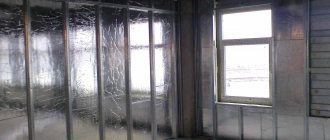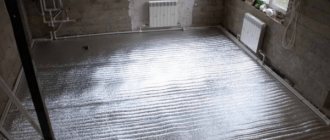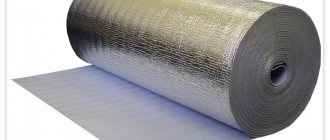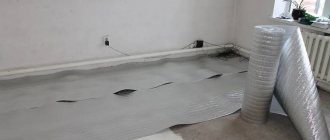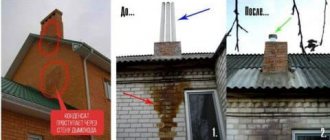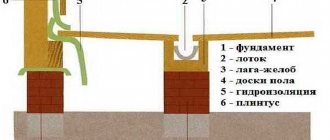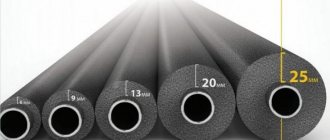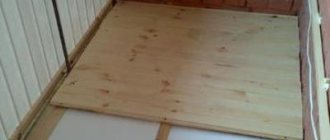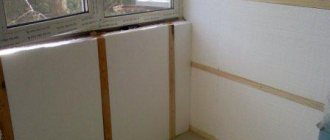Izolon is considered an almost universal material used for heat, steam and waterproofing. During the production process, the ISO standard is necessarily taken into account. Finished products are used in almost all industrial sectors, which is possible due to their excellent performance characteristics.
Features and types
Izolon is an insulating material created in accordance with special technology. The main raw material is foamed polyethylene, which, under high pressure, obtains improved performance properties. Sometimes izolon is additionally covered with a layer of aluminum foil. This material has excellent elasticity and thermal insulation properties , thanks to which the product can be used in any room.
The use of special technology can significantly extend the service life of the finished material. 2 varieties of isolon on sale .
- PPE, that is, cross-linked material. Its structure resembles polyethylene, and it does not change during heat treatment. The product does not pose a danger to the environment or human health. The slight specific smell disappears in literally 2–3 weeks.
- NPE or uncrosslinked material. It is characterized by its unbound molecular structure. Accordingly, the products are more resistant to aggressive environments. Overall this material is more durable. It also does not require special care.
Specifications and Benefits
When purchasing such an insulating material, you need to remember that its properties will differ depending on the type.
PPE:
- thickness from 1 to 50 mm;
- sound absorption about 68%!;(MISSING)
- water absorption up to 1%!;(MISSING)
- density 30–200 kg/m³;
- reflection level 95–97%!;(MISSING)
- permissible temperature from -60˚С to +75˚С.
NPE:
- thickness from 1 to 16 mm;
- sound absorption 3–13%!;(MISSING)
- water absorption about 0.2%!;(MISSING)
- density 19–35 kg/m³;
- permissible temperature from -80˚С to +80˚С.
The service life of both varieties is approximately 90 years . At the same time, isolon tolerates negative external factors well, including chemicals and precipitation.
The main advantages include:
- high quality;
- environmental friendliness;
- non-exposure to UV rays;
- minimum weight, due to which the walls and foundation will not suffer from the load during installation.
It is important to note the thermal insulation properties. The main feature is the low thermal conductivity coefficient .
All cells of the material are closed, which means the surface will be protected from steam and moisture. Although the insulation is quite thin, it provides excellent sound protection. Most insulators are not used in various fields due to chemical activity, which cannot be said about isolon. It does not react with petroleum, oils and various chemical compounds .
The only drawback of the product is its high cost, as well as the need for careful transportation and proper storage. In addition, the product should be installed carefully so as not to damage its structure.
Areas of use
Isolon is very common in the modern building materials market. This popularity is explained by its good performance properties , which affects the scope of applications. Today, insulation is widely used in the following industries:
- medical industry;
- arrangement of housing and industrial premises, namely insulation of foundations, roofs, floors, production shops, utility rooms and warehouses;
- repair and production of vehicles;
- production of thermal blankets and various packaging;
- assembly of refrigeration equipment, air conditioners, heating systems;
- construction of shops, baths and shopping pavilions;
- creation of arch supports, insoles and other inserts for shoes.
Laying isolon
As mentioned earlier, isolon is easy to install. Accordingly, no special tool is required. To complete the work, it is enough to prepare the glue. You will also need nails or a construction stapler. During work, it is necessary to seal the seams. Aluminum tape is used for this purpose. It will help create a truly uniform reflective surface . After completion of the work, the insulation is painted or covered with a layer of polymer film.
It is important to remember the ventilation that walls need.
If you perform internal insulation, the surface will begin to deteriorate. This can be avoided by ensuring there is a ventilation gap .
Izolon is the best choice for insulating various structures. This material is quite expensive, but it will last for 90 years, protecting the room from heat loss. At the same time, the insulation does not have a negative impact on human health.
Izolon
Isolon is a polyethylene foam complex insulation with a wide range of capabilities.
It has excellent sound-absorbing properties, high heat, hydro and vapor barrier characteristics. Izolon technical characteristics and properties. Available uncoated and laminated on one or both sides with aluminum foil, which is protected by polypropylene film, Izolon foil insulation acquires the qualities of reflective thermal insulation. Ideal for both keeping warm and cold.
The material is produced by foaming polyethylene using hydrocarbons. The output is an elastic elastic fabric of a porous structure with closed cells.
Due to its low price, good insulation and strength properties, and ease of installation, it is widely used in construction and other industries.
Izolon, obtained in different ways and therefore differing in properties, is divided into two types:
- cross-linked – Izolon PPE (polyethylene foam);
- uncrosslinked – Izolon NPE (uncrosslinked polyethylene foam).
Izolon PPE
Production using this technology involves cross-linking (cross-linking) of foamed polyethylene molecules and the formation of a cross-mesh structure. Thanks to cross-linking, the cell walls become resistant to loads, retain strength without losing elasticity. Such products have a long service life and high resistance to destruction.
The creation of transverse intermolecular bonds of foam can occur by chemical and physical (radiation) methods.
In a chemical process, initiator substances (porophores) participate in the construction of the structure. With radiation, cross-linking is carried out by a beam of energy.
Properties
Izolon PPE has a smooth surface, elastic, durable microporous base with a cell size of less than 1 mm. The material boasts excellent elasticity and wrinkle resistance, and after compression it completely restores its shape.
Has the following qualities:
- Effective thermal insulation. Retains heat better than mineral insulation. Operates over a wide temperature range.
- Low moisture and vapor permeability. It practically does not absorb water; the closed-cell structure filled with air creates a floating effect.
- Significant noise absorption. It has anti-resonance soundproofing characteristics and dampens impact noise.
- Chemical inertness. Resistant to petroleum products, gasoline, microorganisms, and atmospheric influences. Not afraid of UV rays.
- Elasticity and light weight. One of the lightest insulation materials, soft and durable at the same time. Very convenient for installation, quick and easy to process.
- Durability. The service life, while maintaining all operational characteristics, reaches 80 years.
Izolon technical characteristics
Technical parameters may vary depending on the thickness of the material, its type and density.
| Density | 25-200 kg/m3 |
| Thermal conductivity at 25°C, no more | 0.032 W/m*K |
| Water absorption by volume, no more | 1%! |
| Vapor permeability coefficient | 0.001 mg(m*h*Pa) |
| Specific heat | 1.35 W(m*°C) |
| Flammability group | G1-G4 |
| Ultimate strength, compression by 25%! | 0.035 mPa |
| Shrinkage when heated to 70°C, in 22 hours | 1.45%!p(MISSING)longitudinal size, 0.75%!p(MISSING)transverse size |
| Operating temperature range | -60°C to 75°C |
| Sound absorption coefficient at frequency 250 Hz and 6000 Hz, not less | 7%! and (MISSING) 60%! |
| Level of improvement of sound insulation against impact noise (Lw)³ 18 dB | for seamless cement floors 50mm |
We recommend: How to cover a ceiling with plastic: step by step covering the ceiling with plastic, video
Application
The product is mainly used in construction, mechanical engineering, production of refrigeration units, and consumer goods.
Serves for thermal insulation of walls, partitions, and roofs of buildings. It is used as a sound absorber in the construction of floors and inter-concrete floors. As thermal and sound insulation, it protects ventilation pipes and air conditioning systems, and underfloor heating in systems.
Taking advantage of its buoyancy properties, it is used to fill flotation devices and life jackets.
Izolon NPE
This type of product is obtained using a simplified technology, when the polymer is foamed with gas mixtures under pressure. The expanding gas forms closed pores, where it partially remains. The gas-foamed material has a slightly wavy surface, the base consists of large cells.
Since the structure lacks cross-links between molecules, this insulation is not so strong and elastic. It wrinkles easily, loses elasticity and is prone to destruction of pore walls under stress and aging.
Many technical characteristics for this type of isolon have not been established due to their insignificance, since it is characterized by low thermal parameters, inability to bear mechanical loads and insufficient durability.
Application
Its density of 25-30 kg/m3 limits the use of the product within the low requirements of insulation areas. Often used as packaging and cushioning material.
Video
Source: constructionlinfo.ru
Where is it used?
The widespread use of Isolon is due to its unique technical characteristics.
This material is actively used:
- during the repair and construction of houses, apartments and cottages as a universal insulation material with excellent moisture, noise and vapor protection;
- in the automotive industry as insulation and sound insulation, as well as car tuning;
- on ships and ships as insulation;
- in industrial engineering;
- as packaging material;
- as packaging and lining in the food industry;
- in the medical industry as a material for the manufacture of orthopedic products, for example, special insoles;
- in the footwear industry;
- in the oil and gas industry;
- in the leather and haberdashery industry as product parts, reflective elements of cooler bags and other temperature-preserving items;
- in the sports industry as an elastic base for mats, training boxing pads and other equipment;
- in sports, tourism and recreation as carpets and tatami;
- in the production of toys such as hygienically clean puzzles, prefabricated construction toys, and so on;
- in needlework, for example, as a basis for making large flowers, voluminous decorative figures for celebrations and much more;
- in rocket science.
Izolon is so available in every hardware store that it will not be difficult to purchase it and use it at your discretion. Thanks to the wide range, this unique material can be used for almost any household, industrial, decorative, advertising and other purposes.
These are the main reasons why its popularity and scope of application are constantly expanding.
You will learn more about the areas of application of isolon by watching the following video.
Use in everyday life
For better heat transfer from steam heating radiators, a reflective screen made of isolon is sometimes installed on the wall behind them. They also insulate sewer and water pipes.
Improved heat transfer
It is also used in light industry: shoe insoles are made from isolon, which keep you warm even in severe cold.
For construction work, the industry produces another type of insulation using a reflective surface. The basis is insulation made of basalt mineral wool. Its thickness reaches ten centimeters.
As you can see, a material such as foil-coated isolon is used in many areas of construction, and in many respects its characteristics are simply not interchangeable, and the use of other materials will be more expensive.
Composition of isolon and its characteristics
Izolon is made by foaming polyethylene, so its structure consists of many closed air pores in the synthetic material. The material is elastic, but very soft, so it can be laid on almost any geometrically complex surface. A special feature of the production of isolon is a thin foil layer of aluminum, thanks to which heat is reflected back into the room, and because of this, the main layer of insulation can be made much thinner than the usual 50-100 mm. Izolon has an initial thickness of 2 mm, and this parameter can increase to 100 mm, depending on the application. Thus, insulating a balcony with isolon will require a layer 20-30 mm thick, since the room is always located on the street. Foamed polyethylene is sold in rolls, sheets, strips or blocks.
According to the manufacturing method, isolon is of the following types:
- Foil-coated isolon NPE (the abbreviation stands for non-crosslinked polyethylene foam). It can be of different densities and thicknesses, with a regular and self-adhesive surface. Technology – method of extrusion and foaming with butane gas;
- Foil-coated isolon PPE (the abbreviation stands for cross-linked polyethylene foam). The technology for producing NPE material differs only in the use of another reagent - porofor, which makes it more environmentally friendly due to the absence of freon.
Structure and scheme of application of isolon Technical and operational parameters:
| Characteristic | Foaming ratio | ||||
| 30 | 20 | 15 | 10 | 5 | |
| Density, kg/m3 | 33 | 50 | 66 | 100 | 5 |
| Nominal thermal conductivity, W/m•K | 0,031 | 0,033 | 0,036 | 0,039 | 0,041 |
| Water absorption, cm3/m2 | 0,7 | 0,5 | 0,4 | 0,3 | 0,2 |
| Operating nominal temperature | -60°С + 100°С | ||||
| Sound absorption | at 250 Hz -7%, at 2000 Hz – 38%, at 6000 Hz – 60% | ||||
| Thermal energy reflection coefficient | from 95% to 97% | ||||
| Moisture permeability | < 1% | ||||
| Product thickness | from 2 mm to 100 mm |
Comparison of the characteristics of different insulation and building materials Isolon vapor barrier is divided into the following brands:
- Foil insulation PPE 500, 500-L - based on polyethylene cross-linked in a vertical oven with a bonded transversely directed structure;
- PPE 500 NR – based on polyethylene cross-linked in a horizontal oven with a bonded transverse structure;
- PPE 500-300 – polyethylene chemically cross-linked in a horizontal oven;
- 100, 100-L – non-cross-linked polyethylene with a molecular structure based on EPPE (extruded polyethylene foam).
Practical application of extruded polyethylene foam for home insulation Types of reinforced thermal insulation materials based on polyethylene foam:
- PPE with increased wettability characteristics, intended for painting and gluing;
- Izolon with increased rigidity properties;
- Insulation in a wide range of colors;
- Izolon with additives of fire retardants, as a result of which the degree of flammability of PPE is reduced.
Technical characteristics of Izolon insulation
Thermal insulation is an inevitable stage in the construction of any construction project. Foundations, walls, ceilings, roofs, pipelines - all this needs insulation. There are several thermal insulation materials in the market that are in higher demand than others. Let's consider what the popular insulation isolon is, technical characteristics and features of its application.
Features of the material
The basis of the material is closed-cell fine-cell polyethylene foam.
The porous structure provides good thermal insulation properties with minimal weight. Unlike another popular foam insulation - expanded polystyrene - isolon is plastic (the main disadvantage of EPS is fragility). Many models are laminated with aluminum foil up to 14 microns thick, which gives the insulation reflective and heat-reflecting properties, as well as water resistance. The foil can be on one or both sides.
There are types reinforced with polypropylene mesh. The reverse side of the material is self-adhesive or without glue. Combined types are treated with foil on one side and glue on the other. To avoid gluing during transportation and storage, the adhesive surface is covered with a protective film.
Types and model range
There is cross-linked isolon (PPE) and non-cross-linked (NPE). Izolon PPE has higher technical characteristics (primarily strength properties) than NPE.
The main modifications of isolon used in construction:
- PPE 500 and 500L - polyethylene with a bonded transverse structure, cross-linked in a vertical oven;
- 500 HP - its analogue, processed in a horizontal oven;
- PPE NH – chemically cross-linked, foamed in a horizontal oven;
- PSEV – physically cross-linked with improved technical characteristics (increased strength to cyclic compression, etc.);
- NPE 100 – uncrosslinked, formed from extruded polyethylene;
- 100L – unstitched two-layer;
- single- and double-sided self-adhesive tape Isolon Tape.
There are also varieties modified for one or another characteristic:
- with a wetted surface on which adhesives and paints and varnishes are applied;
- with increased rigidity;
- colored;
- with fire retardant impregnation (fire resistant).
The isolon marking is deciphered as follows:
- two numbers at the beginning - foaming ratio;
- the second two are the sheet thickness;
- letter A – one-sided foil;
- B – double-sided;
- C – self-adhesive;
- ALP – reinforced reflective.
Advantages and disadvantages
Advantages of the material:
- high heat and sound insulation properties of isolon PPE;
- moisture resistance: foil-coated isolon does not require additional waterproofing;
- environmentally friendly - does not contain freon, phenol, formaldehyde;
- hypoallergenic;
- impact resistance;
- due to elasticity – high resistance to breaking loads;
- ease of processing and installation. Insulation can be easily done with your own hands, without the involvement of professionals and special equipment;
- resistance to gasoline, petroleum products, oils;
- UV resistance. Open structures can be processed;
- combines with any wall materials: wood, concrete, plasterboard, stone, plaster, plastic, metal;
- bactericidal and fungicidal (antifungal) properties;
- durability - at least 80 years without loss of properties;
- light weight;
- a wide range of sizes, characteristics, colors.
We recommend: How to tile a bathroom yourself
Foil material
Disadvantages:
- poor vapor permeability. When insulating interior spaces and under-roof spaces with isolon, it is necessary to take care of ventilation. Poor air exchange leads to the accumulation of condensate, which causes rotting/corrosion of materials, the development of fungus on concrete and wooden surfaces, and deterioration of the microclimate in the house. The recommended ventilation gap width for interior work is 2-3 cm, i.e. the usable area of the room is reduced by this amount;
- instability to aggressive chemical compounds;
- instability to damage from sharp objects, protective lining is required;
- combustion toxicity;
- Due to its small thickness, Isolon insulation cannot always be used for full insulation. The exception is foil types;
- the price is on average higher than that of other popular insulation materials - basalt wool, expanded polystyrene.
Areas of application
Due to its low weight and excellent performance characteristics, isolon is used in all areas of construction:
- underlay for parquet, laminate and other floor coverings;
- can be used as a thermal insulation layer when laying heated floors;
- insulation of building structures - walls, roofs, ceilings, basements and attics;
Ceiling insulation - thermal insulation of saunas and baths;
- thermal insulation of warehouse and technical premises - hangars, pavilions, etc.;
- insulation of communications - gas supply pipelines, water supply, ventilation shafts;
- thermal insulation of climate control equipment;
- thermal insulation of vehicles - carriages, cars, isothermal vans.
Installation is not difficult. You need to select a material of suitable thickness, cut the workpieces (can be processed with a regular knife), remove the protective film from the adhesive layer, lay it on the surface to be treated, lightly press and level it. The joints are covered with tape, fixed with a construction stapler or welded.
Tip: Non-self-adhesive material can be applied to acrylic glue.
In addition to construction purposes, it is in demand as a packaging material in various areas of trade - from furniture products to medical equipment, as well as in production.
Characteristics, dimensions, forms of release
Technical characteristics of isolon:
- density - from 26 to 45 kilograms per cubic meter;
- reflective effect of foil – 97%!;(MISSING)
- water absorption – maximum 0.1%!;(MISSING)
- vapor permeability – 0.001 mg/mchPa;
- flammability - from G2 to G4 according to GOST 30244;
- compressive strength - from 0.035 to 0.33 megapascals (depending on the brand);
- stretch – 130-250%!;(MISSING)
- specific heat capacity – from 1.8 to 1.95 kilojoule/kgf;
- thermal conductivity coefficient – 0.031 W/mK;
- operating temperature – from -60 to +125 degrees;
- sound insulation – noise reduction by 20 decibels is possible (depending on density). Maximum sound absorption – 68%!
Dimensions:
- width – from 55 cm to 2 meters;
- length – 2-200 meters;
- thickness – from 1 mm to 5 cm;
- the dimensions of the slabs are 1 by 1.1 and 2 by 1.4 meters.
Balcony insulation
Vacation forms:
- square or rectangular sheets from 1.5 to 10 cm thick;
- rolls. Standard width is 80-150 cm, length 10-200 meters, thickness from 2 mm to a centimeter;
- Izolon Tape – self-adhesive tape in rolls on a cardboard reel, thickness from 8 mm to a centimeter;
- Izolon Block - slabs meter by meter, thickness 5 mm and centimeter.
How to choose material
The choice depends on the purpose. Recommended thickness:
- substrate for laminate – 2-3 millimeters;
- thermal insulation and sound insulation of interfloor ceilings, floor insulation - 0.8-1 cm;
- for laying heated floors – 2-4 millimeters;
- insulation of underground pipelines - 1.5-4.5 centimeters;
- thermal insulation + waterproofing of tunnels – 1-2 centimeters.
Tip: When installing a heated floor with a dry screed, one-sided foil-coated isolon is suitable. If the floor is made with a “wet” cement-sand screed, it is better to choose a double-sided one.
Different types of material are used for different purposes:
- Izolon Tape - for gluing cracks, for sealing window niches and doorways as heat/sound insulation and shock protection;
- Izolon Block - for internal thermal insulation of premises, external thermal insulation of seasonal auxiliary buildings, interfloor ceilings, flat and pitched roofs, foundations;
- For thermal insulation of heating mains and other pipelines, foil-coated isolon is preferable, the performance characteristics of which are an order of magnitude higher due to the reflective layer.
Average cost:
- Izolon Pressed block, meter by meter, thickness 5 cm, costs about 1 thousand rubles per piece;
- Isolon 500 sheet, two meter by two, 5 cm – 1 thousand rubles;
- isolon 500, roll 60 meters, width one and a half meters - 13 thousand rubles;
- the price of a 50-meter roll of foil isolon is 12 thousand rubles;
- self-adhesive Izolon Tape, roll 20 meters - about 3 thousand rubles.
Source: balkonsami.ru
| Share on social networks: | Rate this article: (No votes) Loading… |
Features of the material
Before purchasing thermal insulation, you should take into account that the properties may differ between types. For example, if you have PPE in front of you, this indicates that the insulation is characterized by sound absorption at the level of 68%. Thickness can vary from 1 to 50 mm. Water absorption is no more than 1%. The reflection level reaches 97%.
It is also important to take into account the density; its maximum can be 200 kg/m3. The permissible temperature varies within the following limits: from -60 to +75 ˚С
The NPE variety has a different thickness, it reaches 16 mm, but the water absorption is less and equal to 0.2%. As for sound absorption, it is reduced and can vary from 3 to 13%. The density is also less and can be equal to a figure ranging from 19 to 35 kg/m³.
It is also important to consider the permissible temperature. In the case of NPE, the range is somewhat wider and varies from -80 to +80 ˚С
Izolon PPE, like its analogue, can be used for 90 years. Thermal insulation copes well with external factors, including precipitation and chemicals.
Among the main advantages are:
- high quality;
- UV resistance;
- environmental friendliness;
- minimum weight.
Due to the insignificant mass during the laying process, the foundation and walls do not suffer from loads.
Advantages of insulation
Izolon is an environmentally friendly and safe material. It is characterized by elasticity and ease of processing. To cut this insulation, you can use a stationery knife or regular scissors. It is easy to lay on surfaces of any configuration, since the material is very light.
By properly insulating your walls with isolon, you will protect your home from the penetration of cold wind and dampness.
The advantages include high thermal insulation qualities. The main operational property of isolon is its low thermal conductivity coefficient, which ranges from 0.03 W/m*K and higher (the indicator depends on the manufacturer and variety). Moreover, the material has good vapor permeability and moisture resistance, because each cell in the insulation is closed, so the material does not absorb water, thereby protecting the surface.
Isolon can be fixed with staples, glue, screws or nails. It instantly restores its shape and is wear-resistant. Thermal insulation material can be used repeatedly, since it is not afraid of temperature fluctuations, precipitation and ultraviolet rays. Manufacturers of isolon assure that such a product will last at least 80 years.
Production Features
The special characteristics of the material require a complex, multi-stage and high-tech manufacturing process. It is common knowledge that there are a number of important processes involved during the production of a material. And all the stages can be briefly represented in three points:
- Mixing. At the same time, polyethylene, foaming agents and special substances that can affect the structure of polymers are mixed in a certain proportion.
- Extrusion. All substances are heated and melted, creating a special consistency.
- Foaming. Finished sheets of isolon, thanks to special substances, foam. At this stage, many pores form in the material.
When producing foil-coated isolon, at the very end of the technological process, thin aluminum foil is glued to a layer of foamed polyethylene using the lamination method.
Insulation structure
Izolon is produced in the form of sheets, rolls or sleeves consisting of foamed polyethylene and foil covering it on both sides. This type of material is called foilisolon. Other materials can also act as a reflective layer:
- Aluminum foil;
- Metallized lavsan;
- Metallized polyethylene.
Folgoizolon may have one or two reflective sides. The reflective sheet is connected to polyethylene foam by welding, which ensures the solidity and strength of the structure.
[ads-pc-1]
General installation rules
In order for thermal insulation to be as effective as possible, you need to know how to properly apply and install insulation with foil. Primary requirements:
- Place the reflective surface towards the room. Failure to comply with the norm will negate the main advantage of foil insulation.
- Joining the panels closely - any gaps will lead to the appearance of cold bridges. Thin rolled materials can be laid with an overlap of 5-7 cm. The joint lines must be glued with foil tape.
- Aluminum is a good conductor of current. All wiring in contact with the insulation must be placed in corrugated plastic tubes.
- A gap must be provided between the finishing and the insulation. When installing insulation with double-sided foil, an air pocket is also left on the side of the outer wall.
- The use of self-adhesive insulation is permissible without additional fasteners. However, when finishing large vertical and inclined areas, it is better to pinpoint the material with staples.
Heated floor installation process
Foil insulation is rolled out across the floor. Then it is secured to the joists with staples from a stapler. The fastening points are taped with tape for waterproofing. In the spaces between the joists, a layer of thermal insulation made of mineral wool is laid. On top of this is another layer of insulation with aluminum foil placed inside the room. Again we secure the material with staples.
Installation process
We make grooves in the joists for laying heating pipes, with mandatory insulation in cold areas. We cover the top with boards.
Such a floor will be completely heated within nine to ten hours.
Installation technology
The surface of foil isolon is easily damaged, so it needs to be handled with care during transportation and installation. Depending on which part of the building or structure is to be insulated, the technology for laying the material is selected.
- If it is planned to insulate the house from the inside, then Isolon is laid between the wall and the finishing material, maintaining an air space between them to increase thermal efficiency.
- The best option for attaching the insulation would be to use wooden slats that form a small sheathing on the wall. Foil isolon is fixed to it using small nails. It is better to use a material that has a layer of foil on both sides (modification B). In order to prevent “cold bridges”, the joints are taped with aluminum tape.
- For thermal insulation of concrete floors, isolon is combined with another type of insulation. The latter is laid directly on the concrete, between the floor joists. Foil insulation is laid over this structure, and the floor covering is placed on it. Typically, this type of insulation is used as a substrate for laminate flooring. In addition to heat conservation, it helps reduce the load on the main floor and has a sound insulating effect.
- When insulating a balcony, it is better to resort to installing a multi-layer structure. The first layer in it is a one-sided foil-coated isolon, laid outward with a reflective layer. The next layer is insulation that can withstand increased mechanical loads, for example, polystyrene. Isolon is laid on top of it again. The installation technology repeats the principle of installing the first isolon layer. After the insulation is completed, they begin to install the sheathing on which the finishing materials are attached.
- The simplest way to insulate a living room in an apartment building without dismantling the walls is to place a layer of isolon behind the heating radiators. The material will reflect heat from the batteries, directing it into the room.
- For floor insulation, it is optimal to use ALP modification material. Type C material is used mainly for insulating buildings for technical and domestic purposes. For heat and sound insulation of car interiors, type C isolon is usually used, combining it with special mastics.
Features of installation of foil insulation
Before purchasing, measurements are taken and the required quantity is calculated based on the fact that the insulation will be fixed not overlapping, but end-to-end. The question of how to properly lay insulation is solved in the same way for both types of metallized coating. When insulating walls, adhere to the following rules:
- Foil thermal insulation is laid with the reflective (shiny) side inside the room.
- Double-sided material is intended for thermal insulation of frame buildings.
- Installation on walls includes the organization of sheathing, the slab insulator is fixed in it between the guides and is additionally strengthened with dowels.
- Installation on the ceiling is carried out using a stapler. The joints are sealed with metallized tape or aluminum adhesive tape. Between the insulation and the final finish, a gap of 2-2.5 cm is created for ventilation.
Fixing joints Source krovlyaikrysha.ru
Scope of application of foamed thermal insulation
Due to its unique properties, isolon is widely used in many industries, construction and repair work. For example:
- Insulation of wall structures, floors, ceilings, floor slabs. Izolon has proven itself well in private and multi-storey construction, construction of garages, bathhouses, and outbuildings. Insulation of balconies and loggias without creating additional load on supporting structures.
- Vapor barrier for rooms with high humidity.
- Insulation of pipelines.
- Reliable insulation when installing self-leveling floors.
- Industry: packaging of medical equipment, production of thermal blankets, production of refrigeration chambers. It should be noted that life jackets are made on the basis of isolon, which help retain body heat during prolonged exposure to cold water.
- Protection of car elements from corrosion, additional body insulation.
It should be noted that no building material in the world has such versatility.
Areas of application
Foil-coated isolon is used in many industries:
- it is used to cover pipelines, water supply and ventilation systems, and to insulate process equipment in the oil and gas industry;
- paste over air conditioning systems, refrigeration chambers;
- insulate vans, cars, railway cars, engine compartments, car skins, bodies;
- in everyday life it is used in the manufacture of thermal blankets, rugs, packaging of various products;
- Cottages, dachas, individual houses, high-rise buildings are insulated with it;
- saunas, baths, hangars, warehouses;
- pavilions, shops, agricultural facilities;
- in construction, Isolon is used to insulate roofs, external walls, ceilings of cold basements, and partitions;
- it is used for insulation inside buildings;
- it is used as a lining under laminate, carpet, parquet, and heated floors;
- It is used to insulate floors between floors, plinths, foundations and other objects in the construction industry.
Basic techniques for creating flowers from isolon
In order to make a flower from isolon, you need to clearly imagine the original and know thoroughly what each vein in the petal and sepal looks like
In addition, it is important to choose the right shade combination and sizes. After this you can start making templates
Photo zone with flowers from isolon PHOTO: pinterest.nz
What you need for work
A big plus for those who are just starting to master working with isolon: the material does not require the purchase of complex, expensive tools. It is very similar to foamiran, and every home has all the equipment to work with it:
- tailor's scissors, they can be replaced with a mounting knife;
- hair dryer, suitable not only for construction, but also for household use, but with two heating modes;
- glue gun, which must have a temperature switching mode;
- stapler, staples and threads;
- paints: in a spray can or acrylic.
Using a hairdryer, you can give the blanks any shape PHOTO: ytube.tv
How to make a flower
Isolon is often used to make flowers of various sizes: from a tiny bud to a full-blown inflorescence or a composition the size of a person. They can be located on stems, formed into bouquets, and flowers are often used to create three-dimensional panels.
When creating flowers from isolon, it is necessary to take into account some nuances:
- Each flower or bud is assembled from several elements. Small parts are made in sizes 10x10, 12x12 cm², larger ones - from 20x20 to 50x50 cm². When assembled, the diameter of the flower can exceed 1 m;
- The thickness of the isolon is selected depending on the parameters of the flower. For small products you can use material with a thickness of 2 mm, for larger ones - over 3 mm.
Assembling a flower PHOTO: pinterest.ru
Stem
For large growth flowers, the stem must first of all be strong and solid. A pipe made of metal, plastic or metal-plastic is best suited. Plastic elements can be given any bend by heating.
For buds or small flowers you can use the following material:
- wire, it is better to choose it with ready-made green insulation;
- thin metal rod;
- plastic cocktail straw.
For a small stem, ordinary wire is suitable PHOTO: livemaster.ru
Petals
The technique for forming the petals of different flowers is different; when making your own, use the following recommendations.
| Illustration | Flower | Flower formation technique |
| PHOTO: youtube.com | Rose | First, a bud is formed, half-opened and opened petals are placed around it |
| PHOTO: youtube.com | Peony | For a peony, a half-open bud is used; the petals have a carved edge at the top. |
| PHOTO: skillofking.com | Tulip | The flower consists of four petals, connected in pairs around a stem |
| PHOTO: pinterest.ca | Chrysanthemum | For a chrysanthemum you need to prepare a large number of thin petals that are connected around the stem |
Stand
Most often, the following options are used as a stand:
- welded structure made of steel base;
- a concrete stand, this option is similar to a welded structure, with the exception of the base, which is filled with mortar;
- a stand from different containers, into which cement mortar is poured, and before it hardens, part of the rods from the flowers is inserted.
Metal stands PHOTO: salvabrani.com
Foil insulation thickness: which one to choose
You can buy folgoizol in several types. Izolon is used as a waterproofing and thermal insulation material. When choosing a waterproofing material, you should pay attention to the fact that it has only one thickness option - 3 mm.
Folgoizol is a type of rolled material that consists of two layers: bitumen-polymer binder reinforced polyester and foil.
The roll has a length of 10 meters, a weight of 28 kg and a thickness of 3 mm. The roll is one meter wide. Folgoizol is absolutely waterproof. The material can be welded and self-adhesive.
What thickness to use:
- For insulation, you can use 3mm thick isolon.
- To insulate a wooden house, you can use 3 mm film.
- If the house is reinforced concrete or expanded clay concrete, then for its insulation you can use material 10 mm thick.
- For insulation of brick, shell tile, gas silicate, foam concrete, 5 mm thick isolon is used.
Isolon is the latest thermal insulation material, which has found wide application in industry and everyday life. An additional layer of foil increases the strength of the material without making it heavier. Folgoizol consists of uniform cells and a reflective surface, which affects its low thermal conductivity.
Basic properties
Many consumers are wondering what isolon is. If you are also one of them, you should know that the material does not perceive temperature changes and does not change parameters when they fluctuate sharply. The structure is characterized by high noise insulation qualities, while the thickness is relatively small.
Izolon is quite often used by motorists for interior decoration. It is impervious to moisture and is able to protect metal from corrosion. For the hood, you should purchase a foil version that is laid on mastic. In order to avoid installation difficulties, it is better to purchase insulation with an adhesive surface; it can even be laid on a base with complex geometry.
If you are wondering what isolon is, then you should also know that this material is durable and reliable. It does not require additional maintenance during operation, is fireproof, does not support combustion, but evaporates. At the same time, it decomposes into carbon dioxide and water.
The main purpose is repair work inside buildings. When creating self-leveling floors, a thin layer of thermal insulation is laid to prevent the solution from leaking to the lower floors. The layer acts as thermal protection and a water barrier, which is important when renovating multi-story buildings.
Among the main properties, ease of installation should be highlighted. The canvas will need to be laid out and secured. In the case of walls, ventilation must be provided. When insulation is carried out from the inside, in the absence of an air layer, the materials will collapse. This is due to the fact that they are hygroscopic and should be protected from moisture or provided with drying and ventilation.
When answering your question about what isolon is, you should know that it can also be used externally. This is due to the fact that the material is resistant to ultraviolet radiation. Due to the fact that isolon has high sound insulation properties, it can be used as insulation for a balcony; it will not decompose under the influence of ultraviolet radiation and will not attract insects, rodents and birds.
How to lay insulation with foil for pipes
Shells for insulating communications are made of polystyrene foam and mineral wool.
In addition to thermal insulation for floors, horizontal ceilings and walls, there is also insulation with a reflective layer for pipe insulation. These are shells that are made of polystyrene foam or mineral wool. The former are lighter and are not afraid of moisture, while the latter can withstand high temperatures, which is appropriate when insulating chimney pipes. Considering the fact that the material is already produced in the form of a pipe, the question of whether to put the insulation with foil on the outside or inside is not worth it. There is a shell that you put on the pipe and that’s it, you can’t turn it inside out.
At the same time, there is always a choice when purchasing, since they are also produced with one (outer) or two (outer and inner) layers of foil. Such shells are used for:
- laying pipelines by air;
- laying highways underground;
- laying pipelines in unheated rooms;
- insulation of chimneys.
In some cases, they are used to insulate pipes so that the coolant does not lose its temperature even in heated rooms. For example, in industries where the first and last heat exchanger of one circulation ring are installed at a great distance from each other.
Comparison of properties
To understand the difference between these materials, it is necessary to take a closer look at all their differences.
Properties of foamiran
Since the basis of this material is foamed rubber, as a result of its manufacture it turns out to be very light and flexible. That is, foamiran can not only stretch well, but also take any shape. In addition, it is worth noting that the form that this material takes is immediately preserved. Sheets of foamiran can be cut without much difficulty into the parts necessary for the master. Another very important point is that this material has water-repellent properties. Therefore, the finished product can be washed in case of contamination without worrying about the consequences.
It should also be noted that the material is environmentally friendly.
Since foamiran sheets have a porous structure, they lend themselves perfectly to painting. Most often, oil or acrylic paints are used for painting. In some cases, experienced needlewomen even use cosmetic shadows or crayons for this. To prevent the coating from wearing off in the future, it can be secured on top with varnish: either glossy or matte.
Despite the large number of advantages, there are also some disadvantages of this material. First of all, the price is too high, as well as the susceptibility to deformation. In addition, if the material is not used correctly, it will be easy to tear.
Properties of isolon
To begin with, it is worth considering the positive aspects of this material. First of all, isolon is a fairly dense and durable material, so it will be difficult to tear. You can cut isolon not only with scissors, but also with a cutter. Just like foamiran, isolon is hypoallergenic, lightweight, and melts quickly. This material is not afraid of moisture, is not susceptible to mold and is perfectly fixed.
When making flowers, pastels are most often used for coloring, which gives them a similarity to real flowers. However, painting can be done with acrylic paints and other dyes. Izolon does not emit toxins at all and does not have an unpleasant chemical odor.
However, this material also has some disadvantages, which differ in many ways from foamiran. First of all, it may be damaged during transportation. In addition, isolon quickly becomes covered with dust and can also quickly become electrified. For this reason, it is best to store it in a plastic bag, and finished products should be coated with a solution specially made for this purpose.
Advantages
- The material tolerates mechanical loads well. Recovers after blows;
- Service life reaches 100 years;
- Neutral to aggressive environments, does not react to gasoline, oil, or fuel oil;
- Does not degrade when exposed to ultraviolet radiation.
- Can be used in external construction work, is not afraid of negative atmospheric phenomena;
- The non-flammability of the material ensures reliable fire safety;
- Light weight does not significantly increase the mass of buildings or vehicles;
- Thanks to its elasticity, covering hard-to-reach places will not be a problem;
- High noise insulation values;
- Water, moisture, steam - impermeable material;
- There is virtually no rotting;
- Convenient installation using a self-adhesive layer;
- No release of toxic substances.
Kinds
The following types are available:
- uncrosslinked – NPE;
- cross-linked – PPE, which is divided into subtypes: chemically cross-linked PPE NX and physically cross-linked PPE NR.
In terms of its characteristics, isolon NPE is inferior to cross-linked ones.
Izolon PPE is resistant to aggressive influences and has higher heat, sound and moisture insulation values. It is possible to combine different types in one product.
To reduce losses from radiation of heat waves absorbed by the internal surfaces of the room, a fairly simple but very effective method is used - covering the isolon with foil. The role of foil is its ability to reflect infrared rays. This significantly increases the importance of isolon in its fight against heat loss.
Please note: Mineral wool characteristics and properties
Foil-coated isolon comes in the following modifications:
- “A” – one-sided foil coating;
- “B” – coated on both sides at once, which increases resistance to external influences;
- “C” – self-adhesive;
- “ALP” – self-adhesive, with a protective film.
Insulation with foil must be laid in such a way that its metallized layer “looks” into the insulated room
When laying foil-coated isolon with a protective film, it should be carefully removed, freeing the surface with the applied adhesive composition. If a non-self-adhesive option is used, then you should use glue that is suitable for this purpose in terms of its properties.
Some varieties of isolon have a high wettability value, which facilitates the use of glue for their fastening.
Izolon advantages
Isolon acquires its main advantage, compared to other types of insulation, immediately after applying a thin layer of aluminum foil to it. Foil, like a mirror, reflects the temperature background, preventing the spread of heat or cold, depending on the application. The layers work in concert to protect from a foreign environment, like a good thermos, the foil reflects, and the polypropylene foam prevents the penetration of temperatures.
Light weight
This feature of folgoizolon allows it to be used for insulating any structures without resorting to their strengthening (reinforcement).
Thin material
Many insulation materials, despite their excellent characteristics, are not allowed to be used indoors. One of the reasons is that these products are too thick, resulting in a reduction in the usable volume of the room. For example, to install basalt wool, it is necessary to install a supporting frame. This helps reduce the length and width of the room by 4 cm on each side.
In addition, finishing is also needed, since mineral wool is not a material that can be left uncovered. This means that you will have to lose a few more centimeters. In addition, you need to take into account that such insulation requires reliable hydro- and vapor barrier.
Elasticity
This characteristic makes it possible to save time that could be spent on high-quality leveling of the base, as happens before installing various thermal insulation materials (such as polystyrene foam).
Multifunctionality
Folgoizolon actually takes on three functions. This significantly reduces costs not only for purchased materials (mastic, film, as well as fasteners), but also reduces the time for repair and finishing work.
Zero water absorption
Thanks to this feature, foil-isolon is a very durable material, capable of maintaining its properties unchanged for many years and at the same time protecting insulated surfaces from an aggressive external environment.
Ease of cutting
Folgoizolon is easy to cut with a regular knife, which eliminates the need to purchase special tools and equipment. Elasticity plays a big role when going around different angles.
Environmental friendliness
The insulation does not contain easily decomposed components. Even when heated to one hundred degrees, foil isolone does not emit toxic substances. The material is also good because it is not susceptible to damage by mice, insects and mold. Due to its insignificant thickness, the product is not of interest to mice in terms of arranging nests.
Economical
When laying, foil-coated isolon produces almost no production waste. Even the smallest waste remaining after cutting can be placed on any surface. So, to fill gaps, cracks, and cavities, you can use the remains of foil-isolon, which will give the structure good thermal insulation characteristics and allow one hundred percent to use all the purchased insulation.
Folgoizolon - scope of application
One of the most important steps when constructing a building or during renovation work is to protect critical structures from negative external influences. For this purpose, hydro- and thermal insulation materials are used, available on the market in a very wide range. One of these materials is foil-isolon - a product that is a two-layer insulation based on foamed polyethylene and foil.
Folgoizolon can be used in a wide variety of industries - in the construction and medical fields, for agricultural purposes, and in commercial equipment. Experts are well aware of the features of using folgoizolone, but the average consumer is probably most concerned about the issue of household use of this material. Here are just the main application possibilities.
The specifics of the installation of various materials, if in the future the surface will experience significant mechanical stress, requires the installation of a shock-absorbing layer, which for simplicity is called a substrate. For example, before laying floor coverings (laminate, linoleum), such a substrate makes it possible to reduce the load on the base floor and at the same time insulate the floors and reduce the noise level in the room.
Folgoizolon is excellent for protecting equipment, machines, devices from moisture, dust, and temperature changes. This product creates an airtight layer in areas between all kinds of parts, structures, and communications.
Perhaps buying cheaper insulation materials will help you initially get benefits, but if you are planning to insulate your home, cottage, garage, bathhouse, then buying isolon will still be a more profitable idea. The initial investment will be a little larger, but the payback on your project will be much faster.
Your heating bills will quickly be reduced by more than 30% of your usual payments. Moreover, if you follow the promotions for foilisolone, the price in Leroy Merlin or in Maxidom may seem completely acceptable.
Insulation and thermal insulation of floors on wooden beams
Such floors are installed above a ventilated basement or crawl space using wooden beams that are mounted in such a way that the load-bearing beams rest on the basement walls. Izolon insulation is installed directly under the beams as waterproofing. In such structures, Izolon acts not only as a waterproofing and insulation material, but also as a sound insulator. It protects against the most common impact noise, which, when propagated in building structures, usually causes great discomfort. The use of this material helps mitigate noise and prevents its spread.
Sound insulation Izolon. Application for wooden floors above a ventilated underground
Such ceilings are wood logs laid on brick pillars, on top of which the ceiling is laid. To provide heat and vapor barrier, the floor is laid using Izolon. This material, in turn, protects the wood from moisture vapor and rotting,
and also prevents cold air from entering the apartment from the underground. In addition, the material also acts as an insulator against impact noise, preventing its occurrence and spread. For thermal insulation and noise protection, it is recommended to use the same Isolon brands as for insulating concrete floors.
Thermal insulation Izolon for wooden floors built on the ground
When installing a wooden floor directly on the ground, it is important to remember the need to protect the wood not only from moisture vapor, but also from its capillary suction from the ground. Isolon, which has almost zero moisture absorption, is perfect for this purpose.
More details
Using isolon
Installation of the material is quite simple; self-adhesive isolon is especially easy to use. Conventional material is attached to the sheathing when insulating walls or roofs. Having calculated the dimensions of the sheets according to the cells of the sheathing, the sheets are placed in these cells and secured with self-tapping screws or metal brackets. The use of nails in these cases is not advisable.
Self-adhesive is installed without lathing - just remove the protective film on the adhesive layer and lean the glued side against the wall, smoothing it evenly to remove air from under the joint.
It is recommended to first prepare the wall by removing the old finish and cleaning the surface with sandpaper or a wire brush. After this, the wall is wiped or washed to remove construction debris and dust. No priming required.
[ads-pc-5]
Properties and characteristics depending on the type
The properties and characteristics of isolon directly depend on its type and determine the possible scope of application. Before choosing a particular variety, it is worth getting acquainted with the available options.
Cross-linked – PPE
During production, changes occur in components at the molecular level. This group includes products with a cross-ligament and mesh molecular base. The specificity of the composition increases the resistance of the material to aggressive environments, and also increases moisture resistance.
Unstitched – NPE
This variety is distinguished by the almost complete absence of connections between the molecules of the components. Essentially, this is a gas-filled raw material with a closed cell structure. Even at the foaming stage during the heat treatment of the substance, carbon dioxide is added to it. It fills pores that are larger than other materials. In addition, NPE has less flexibility.
Based on the crosslinking method, it is possible to select materials with a chemical or physical option for performing this task.
Taking into account the structure, isolon can be foil or uncoated
PPE and NPE
PPE – cross-linked polyethylene foam. During the production of this variety, the components change their state at the molecular level. They come with a cross-ligamentous and mesh molecular base. Thanks to this, the material better resists the effects of aggressive substances and has increased moisture resistance, which significantly expands its possible scope of use.
PHOTO: elektro.guruThe cross-linked structure increases resistance to external influences
NPE – non-crosslinked polyethylene foam. This material has virtually no bonds at the molecular level. It is a substance with a closed cell structure filled with gas. During the production process, at the foaming stage during heat treatment of the feedstock, the mass is filled with carbon dioxide. Penetrating into the large pores characteristic of this variety, it gives the canvas the required properties.
Foil coated on one or both sides
In its structure and composition, this variety is no different from the classic one. However, it has a foil film with a thickness of 10 - 100 microns on one or both sides. For its manufacture, aluminum or another metallized composition can be used.
Due to its high performance characteristics, foil material is used when performing work inside and outside the building. The choice of variety depends on the scope of application. So, for installing floor coverings, Isolon with a heat-reflecting film is selected. During installation, the sheet is positioned so that it is on top.
Products without coating
The performance characteristics of this variety are relatively low. The absence of additional coating worsens its properties and reduces its cost. Due to its availability, it is used in various fields.
Covering and self-adhesive material
The covering material allows you to form an airtight coating. It is glued to the base with glue. The sheets are laid end-to-end or overlapped if the thickness is relatively small. The tightness of the connections is ensured using construction tape.
Self-adhesive isolon is attached to the base immediately after the protective film is removed. A special adhesive composition applied to the surface of the material will allow it to be fixed in the desired position. Self-adhesive foil isolon is especially popular.
Varieties of isolon
The quality of cross-linked isolon is higher than that of non-cross-linked isolon, since cross-linking provides higher heat resistance of the material.
This material comes in 2 types: cross-linked (PPE) and non-cross-linked (NPE). The first option has a structure reminiscent of polyethylene, which does not change even during heat treatment. Such products do not pose a danger to humans and the environment. Cross-linked polyethylene foam has a slight specific odor that disappears after 2-3 weeks.
Read also: properties and characteristics of Izolon PPE insulation.
Non-crosslinked isolon has an unbound molecular structure, so the product is more resistant to aggressive environments and durable. In addition, it does not require special care.
The difference between these materials is determined, as a rule, by resistance to dynamic impacts and tensile strength. Moreover, the first indicators for PPE are significantly higher than for NPE. Isolon is marked as follows:
- A - the product is covered with aluminum-based foil on one side;
- C - material with an adhesive layer;
- B - products with double-sided foil;
- ALP is a foil-reinforced self-adhesive sheet covered with a protective film.
These characteristics will help you easily select the appropriate thermal insulation material, focusing on individual preferences and application.
We bring to your attention a video that shows in detail how to efficiently and independently insulate a balcony with isolon material:
